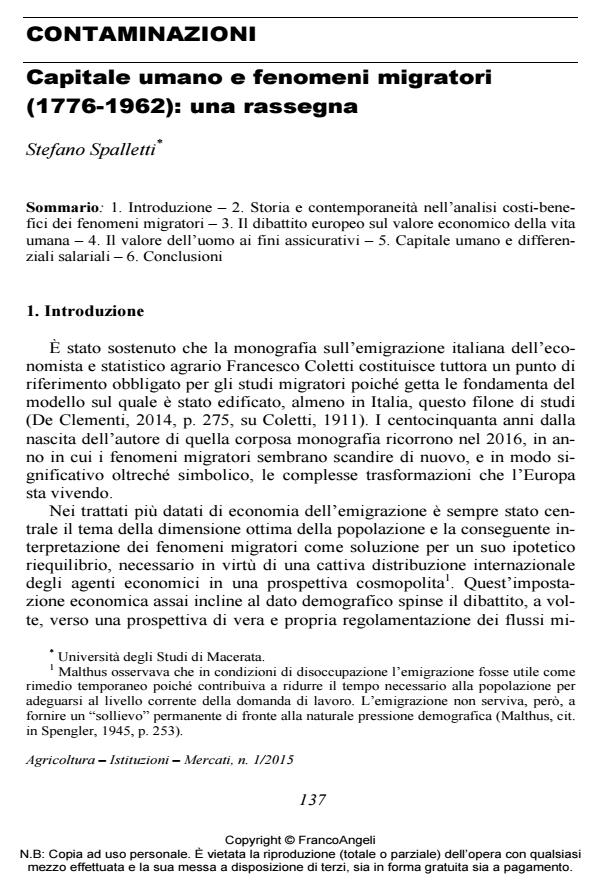Human Capital and Human Migrations (1776-1962): a Review Article
Journal title AGRICOLTURA ISTITUZIONI MERCATI
Author/s Stefano Spalletti
Publishing Year 2017 Issue 2015/1
Language Italian Pages 17 P. 137-153 File size 184 KB
DOI 10.3280/AIM2015-001007
DOI is like a bar code for intellectual property: to have more infomation
click here
Below, you can see the article first page
If you want to buy this article in PDF format, you can do it, following the instructions to buy download credits

FrancoAngeli is member of Publishers International Linking Association, Inc (PILA), a not-for-profit association which run the CrossRef service enabling links to and from online scholarly content.
The article analyses the historical and theoretical relationship between human capital and migrations. Particularly, it describes theories in which migrants are moving economic agents trying to access higher income opportunities, thereby increasing their earnings in a life-cycle perspective. The review begins with the emergence of the rudimentary human capital theory of Adam Smith (1776) and finishes with the modern perspective of Larry Sjaastad (1962) which focuses on the transferability degree of knowledge and skills through migratory phenomenon. Following this path, the article argues that human capital theory makes use of the methodological approach of the costs-benefits analysis also applied to the migrations phenomenon. As well as in some references to classical or even to previous economic culture, this idea can be found by following three historiographical joints: the European debate on the economic value of human life, in the 19th and 20th centuries; some US studies upon human value for insurance purposes, in the Thirties; the analysis on wage differentials developed by the Chicago School and its success, in the early Sixties.
Keywords: Immigration and Emigration, Human Capital, Costs-Benefits Analysis.
Stefano Spalletti, Capitale umano e fenomeni migratori (1776-1962): una rassegna in "AGRICOLTURA ISTITUZIONI MERCATI " 1/2015, pp 137-153, DOI: 10.3280/AIM2015-001007